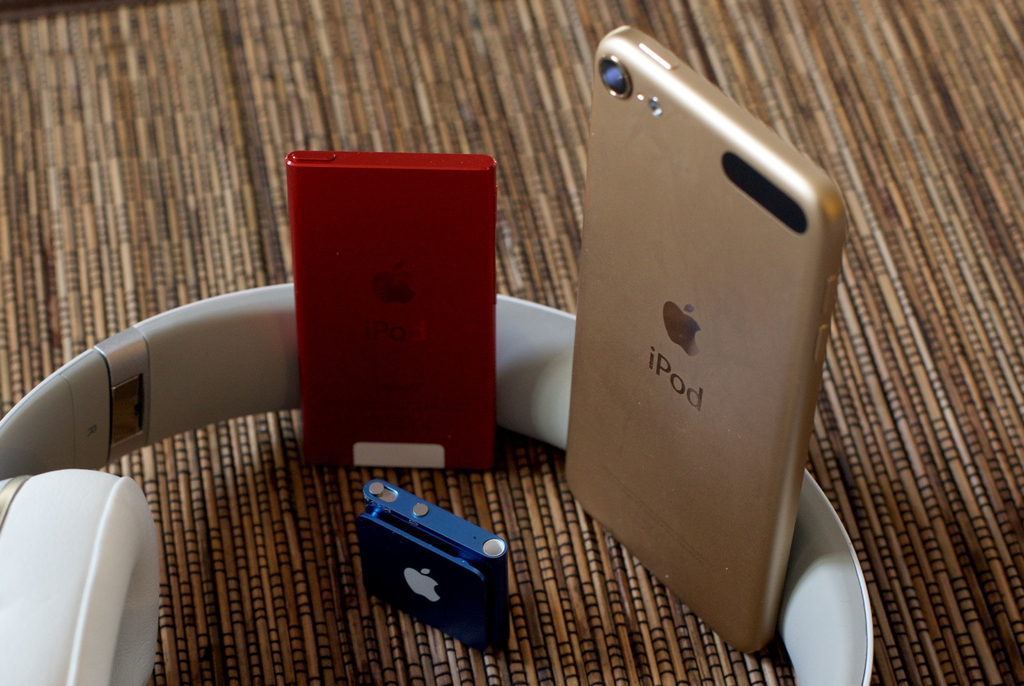Apple’s iconic iPod commercials changed the way we looked at portable music – iMore

|
Getting your Trinity Audio player ready...
|
SOURCE: Luke Filipowicz | iMore
Although the iPod is hardly around anymore, the iPod was a huge part of Apple’s success over the years. The silhouette ads for the iPod remain some of the most memorable and helped the iPod rise to a household name.
Take a trip back to 2001. Wikipedia has just launched, Harry Potter and the Sorcerer’s Stone was in theatres, and Apple was about to change the way we think about music. The iPod launched in late 2001, combined with Apple’s newest software iTunes — which launched in January of that year — became almost an instant hit. MP3 players existed, but lots of them were not user-friendly, and in terms of capacity, they were quite small.
There’s no denying that the iPod was a success because it was an excellent product. Still, the iconic advertising that went along with the product contributed to the success of the product immensely.
The original ad
Although the original iPod ad isn’t likely the one that sticks in your mind, it was an important step in the direction that Apple took with marketing the device.
The original ad features a man in his home jamming out to the tune Take California by Propellerheads and organizing his music library on his Apple iBook. Shortly after that, you see him transfer music to his iPod, unplug it from his laptop, put the EarBuds in his ears, and start dancing around his home with his iPod in hand. At the end of the ad comes the tagline: “iPod; a thousand songs in your pocket.”
You can already see the elements that Apple stuck with moving forward. The simplicity of iPod advertising (even with this original ad) is a huge part of what made iPod advertising a success. Simple, clear messaging is an essential part of any ad campaign, and the short tagline gives you all the information you need to understand what the iPod is all about.
The visuals are relatively simple as well; most of the ad is just the man dancing around his place. It gives the impression that the iPod is fun, cool, and just plain rocks. The choice of music was important too even more so later on; I’ll touch on that later. A catchy tune that is likely to get stuck in your head after hearing it a couple of times during the commercial break of your favorite TV show is never going to hurt your bottom line.
Silhouette success
These are the ads you likely remember when you think of the iPod. Colorful backgrounds, dark silhouettes dancing, upbeat music, and the contrast of the bright white iPod and EarPods. They were tons of these ads, and all of them followed the same basic formula. They did have a few different tag lines at the end over the years, including: “1000 songs in your pocket”, “iPod + iTunes,” and “Now for Windows,” but the visualization is what mattered most.
When it comes to marketing any product, you’re never just selling a product; you’re selling a feeling, or a lifestyle, or something bigger than the product itself. You want consumers to be able to connect with a product on an emotional level, and the one way to do that is to give your product personality or traits that your target audience can relate too.
Lots of ads will attempt to target a very specific audience and goes as far as too cater very exclusive to them. A company will cast actors that look like their intended consumers and have them act in a way that those consumers would act to form a bond between whatever it is they are trying to seel and its potential consumer base. The silhouettes in the iPod commercials did this in a very simple yet effective way because the silhouettes were so generic.
The iPod was targetting younger people, likely that broad spectrum of 18-35-year-olds that everyone wants to advertise to, but by putting their dancers in the shadows, it allowed everyone to see a bit of themselves in the commercials.
No longer were you looking at a specific person in a particular environment interacting with the iPod (like in the first commercial). Still, now you were seeing a variety of people just dancing. It was easy to identify with these silhouettes because they essentially represented “the masses,” they were no one group, one type of person, or one “look,” they were just people enjoying music — who can’t relate to that?
When the music became a selling point
As time went on, selling iTunes became just as important as selling the iPod as Apple starting making money on people purchases music digitally. This was when you started to see a slight shift in the classic silhouette ads to include famous artists. Some of these ads had a little more style — like the one featuring Eminem shown above — but still the same basic concept.
The only real difference between these ads and those previous ones was the emphasis on the songs and artists themselves. Apple didn’t want you only to use iTunes and iPod, but also buy your music from them. They partnered with huge artists at the time that were promoting super popular singles and albums.
This wasn’t the only time U2 and Apple partnered up, although we know how that debacle turned out for them later; at the time, this was super effective. Not only was Vertigo a huge radio hit, but U2 was (and arguably still is) one of the most recognizable bands in the world.
At this point, the iPod was already a huge success, and more versions of the iPod (like iPod Shuffle) were hitting the market. This was simply Apple doubling down on their success.
Silhouettes faded away
All good ad campaigns come to an end eventually, and the iPod silhouettes were faded out, but the impact of those ads is still felt to this day. You can easily find people still reminiscing about the silhouette iPod ads all over the internet today. When you think iPod, most people are going to remember these ads as their first impression of the iPod.
By the time the silhouette campaign ended, the word iPod had become synonymous with an MP3 player, so much so that I remember calling my Sony MP3 player I had an iPod, just for simplicity. That type of market saturation comes from having a great product that was advertised spectacularly well. You couldn’t watch TV, read a magazine, or walk past a billboard in the early 2000s without seeing a black silhouette holding a white iPod, and it worked miracles for Apple.

